{J} 23: A curious traveler's guide to Mexican travelogues
The best travel journalism done south of the Rio Grande, from the work of Jeb Hortop to Paul Theroux
Hola 'migos. The piece below is about the best travelogues written about Mexico, and I promise the recommendations will be a joy to anyone who's ever wanted to read about Mexico beyond the history and guide books, and through the eyes of visiting foreigners. However, it is quite long, and includes works written almost five hundred years ago! So I've split the post into at least three parts. And, for convenience's sake, here are the top five modern travelogues that I recommend to curious visitors and residents alike:Viva Mexico! by Charles Macomb Flandrau (1908)
📚 Archive.org / AmazonInsurgent Mexico by John Reed (1914)
📚 Archive.org / AmazonThe Sudden View by Sybille Bedford (1953)
📚 Amazon (as A Visit to Don Otavio) / Abe BooksDown and Delirious in Mexico City by Daniel Hernandez (2011)
📚 AmazonOn the Plain of Snakes by Paul Theroux (2019)
📚 AmazonYou can find Part II right here. Scroll to read the full list of travelogues below. This post is super too long for email so maybe consider reading in your browser.
-s.
33 of the greatest Mexico travelogues
When it’s complete, Julian’s is meant to be a travel handbook to Mexico City—a work that combines the utility of a travel guide (maps, numbered itineraries, must-see sights) with the vicarious entertainment of a travelogue (people randomly met … streets casually strolled … dangers narrowly averted!).
Combine those two formats and you have something that’s both useful and immersive, with both tactical and literary value for the traveler.
But travel guides alone make for a boring read. So for inspiration in completing Julian’s handbook to Mexico City, I look less to the Lonely Planets and Rick Steve’s of the world, useful as they may be, and more to the pages of literary travelogues.
And there are hundreds of great travelogues about Mexico by foreigners! Which are the best? The most fun to read? The most relevant to today’s traveler?
Well let’s see, you could start way back: The earliest travelogue was probably by Job Hortop, an English crewman on a 16th-century slave ship who was “blown by Furicanes” onto Mexico’s eastern shores. Rain-pelted ports, slave rebellions, days without food or water—not a full accounting of the country, certainly, but a dramatic one.
The first comprehensive travelogue? That came courtesy of another Englishman, Thomas Gage, who arrived in Mexico as a Dominican friar in Veracruz in 1625 after sneaking his way aboard ship in a wine barrel. He overlanded the territory, hiked through a flooded Mexico City, and documented Catholic life—but you won’t find many insights into the modern country in his works.
The most renowned travelogue? That award goes to Alexander von Humboldt, the first person to scientifically survey the country, its mines, and its peoples in his 1811 Political Essay on the Kingdom of New Spain; in the process of that work he created the field of ecogeology, introduced the concepts of ecology and environmentalism and, after publication, inspired several generations of travel writers. Calling it a travelogue is perhaps generous—proto-travelogue perhaps. It’s more like an annual corporate report than a piece of literature, to be honest, and definitely not something to read for funsies.
What else? There’s the explorer John Lloyd Stephens who, in 1839, followed accounts from Humboldt to “discover” the Maya civilization; the journalist John Reed who, in 1914, crossed the border to document the revolution; John Steinbeck who, in 1951, wrote about his scientific expedition in the Sea of Cortez (now the Gulf of California); and Sybille Bedford, who documented mid-20th century Mexico with a rapier-like wit. That was 1953.
Then you’ve got the more recent works: Oaxaca Journal by Oliver Sacks (2002), Down and Delirious in Mexico City by Daniel Hernandez (2012), and my favorite, On the Plain of Snakes by Paul Theroux (2019).
All of these are incredible works, but if you, a curious traveler, wanted to learn about Mexico beyond the strict confines of guide books and wikipedia pages—where would you even begin?
For starters: there isn’t a single travelogue that sums up Mexico, a country that eludes the generalizer and summarizer. It’s too big, too complex, too unconnected and too different—even to itself: the Mexican government recognizes 68 languages, and sixty-three of those pre-date the arrival of Spain. As far as I can tell, there is no travelogue that comes close to encapsulating Mexico as, say, Tocqueville’s Democracy in America encapsulated the United States or Voltaire’s Letters on the English pegged the United Kingdom.
And as far as I can tell, there doesn’t seem to be a comprehensive list of Mexico travelogues, either, not even of the ones published most recently.
I mean, there are plenty of lists that recommend works about Mexico or inspired by Mexico. The New York Times, for example, has an excellent series called “read your way through ____”, where _____ is a city that has a compelling literary heritage, whether as a writer’s subject or setting. Juan Villoro wrote the guide to Mexico City, recommending everything from local authors writing on Mexican themes (Octavio Paz, Carlos Fuentes), to novelists (DH Lawrence, Malcolm Lowry), to reporters—but as great as this resource is, there are precious few travelogues mentioned.
Where’s the list of Mexico through the eyes of foreigners? Not easily found. And so, since I’ve been reading and collecting Mexico travelogues for several years, I decided to make it.
In making my list, I wanted to compile travelogues, written by foreigners, in English, in book form. Not travel guides, because they favor strict compilation over creative observation, not magazine articles (as compelling as many are, because there are simply too many), and not books by Mexicans—because tbh, I’m more interested in how foreigners, like me, have experienced Mexico. So by definition, the list below includes a lot of Brits, a lot of gringos, and at least one Australian.
Within that roster of bad teeth and bad manners, I wanted to include diverse authors. That task is limited by the available corpus, but nine of the thirty-one books below are by women. If you’re familiar with the authors, you might notice how almost all of them aren’t exactly paupers. There, but for the grace of inheritance.
I also wanted to compile works that are more literary, less scientific or historical. I’m more interested in observational journalism and cultural criticism, less in tabulated ethnography or geology or even purely historical accounts, like that of Emperor Maximilian’s personal physician (i.e., Dr. Samuel Basch, the man who also happened to invented the blood pressure meter). I included Alexander von Humboldt’s Political Essay, because it inspired so many future travelogues, and Steinbeck’s Log, because there are literary moments between the laboriously detailed catalogues of urchins he found (kill me), but I declined to include Unknown Mexico by Carl Sofus Lumholtz, because it’s almost a purely scientific work (but I just mentioned it here, so, I dunno, whatever!). My point is that literature is what I was looking for.
Finally, I wanted to include works that covered each era within Mexico’s post-colonial history. I wanted to understand how writers perceived Mexico and the Mexican people across generations. What changed? What stayed the same? And, how did the style of writing and the format of that writing change? How were writers influenced by those that came before?
From the moment of its discovery, foreign writers have described Mexico in a similar manner: on the one hand, transcendently beautiful, with sights and food and people unlike any other country. On the other hand, impoverished, dilapidated, and nearly in ruins.
Bernal Díaz, a conquistador in Cortés army, was the first to set such a description down in his History, when he wrote of the wonder of Tenochtítlan’s white, lacustrine cities, the canoes flitting between the shores of lakes, and Montezuma’s topiaries. Followed by: "Of all these wonders that I then beheld, today all is overthrown and lost, nothing left standing."
“An atmosphere of transcendent purity,” is how Charles La Trobe described Mexico City in 1836, right before he described all the surrounding land as “deserted waste”. “Nearly unparalleled beauty,” is how Fanny Inglish recounted her views of Mexican lands not a few years later, before deciding the drained lakes and crumbling houses were “melancholy.” All writers are drawn towards the romance of Mexico’s pre-colonial beauty, and all writers are surprised at what they consider its state of fallen grace. Mexico’s eternal plight is to never equal, in foreign eyes, what foreigners destroyed.
Many of the writers below arrived to Mexico City on horseback, but the first view afforded to today’s visitors is usually by airplane. You were not here, and then suddenly you were, that is the experience of arrival today. Instead of following a footpath from a jungle shore to witness, like Díaz, the lapping lake waters on the hill sides from a mountain pass, you witness instead, from a tiny oval window in the sky, slum-grey houses splashed up against the inner rim of the surrounding mountains. If it was difficult to summarize Mexico in the days of overlanding, it has to be even more impossible now, airdropped as we are into the concrete heart of this green and sinking land. That may be the best recommendation for reading yesterday’s travelogues, today.
-s.
p.s. If you have any favorite Mexico travelogues, I hope you’ll leave a recommendation in the comments.
Part 1: 1591 to 1908
📕 The rare travales of an Englishman who was not heard of in three-and-twenty years’ space
Job Hortop
1591
For twelve years towards the end of the 16th century, Job Hortop was a crewman on a Spanish slave ship, during which time he visited the Dominican Republic (then Hispaniola) and Mexico (then New Spain). His ordeals were published and later included in Hakluyt’s Voyages, a collection of original records of English voyages overseas before 1600. The eponymous Hakluyt Society publishes, to this day, scholarly editions of primary records of voyages and travels, like Bernal Diaz’s The True History of the Conquest of New Spain, one of the most famous narratives ever written about Mexico. For three hundred years Spain kept Mexico occluded from foreign eyes, so Hortop’s record is one of the first non-Spanish accounts of the territory, and the departure point for all other travelogues. But otherwise, I’m just here just for completionist’s sake—because the descriptions of Mexico’s coasts, bays, and slaver’s jails give such an incomplete view of Mexico as to barely recommend the book.
📕 Travels in the New World
Thomas Gage
1648
Travels in the New World is the first comprehensive account of Mexico in English. It was written by Thomas Gage, who arrived as a Dominican friar in Veracruz in 1625 after, by some accounts, sneaking his way aboard ship in a wine barrel. Gage was, according to his contemporaries, his brothers, and the delightfully frank editor of the 1958 edition of Travels, a selfish, slanderous, and conniving asshole. Disenchanted with the Dominicans, he fled Mexico for Spain and then England, converted to Protestantism at a time when Catholics were being murdered for their beliefs, then as testament to his whole-hearted conversion he a) wrote Travels, in which he heaped abuse on Dominicans and Catholics, and b) helped send three Catholic priests to a death by drawing and quartering. Not a great guy! But: a fairly good and entertaining writer, and Travels reads easily thanks to the heavy hand of the aforementioned editor. I particularly enjoy his description of seeing Mexico City for the first time, which was a common motif among travelogue writers until the mid-19th century because, like Cortez, to reach the city they had to overland from one of the coasts, climb the mountains that surround the city, and then see it laid out below. “The situation of this city is much like that of Venice, but only differs in this,” wrote Gage. “That Venice is built upon sea-water, and Mexico upon a lake, which seeming one, indeed is two.”
“I can confidently aver that in my time before the removing of the lake those that died were rather drowned than buried, for a grave could not be digged with an ordinary grave’s depth but they met with water, and I was eye-witness of many thus buried, whose coffins was covered with water.”
📕 Political Essay on the Kingdom of New Spain
An act of literary and scientific fellatio performed upon the Spanish Crown, Humboldt’s Essay, written with the express permission of Charles IV (necessary, because foreigners were generally forbidden from entering New Spain) begins by exclaiming in great and measured detail the enormous extent of Spain’s empire. Like Gage before him, Humboldt had ulterior motives for writing about Mexico. But unlike Gage, Humboldt became the most renowned scientist of his age, and Essay was the first truly scientific account of New Spain, with Humboldt crossing the country measuring everything from the heights of mountains to the outputs of silver mines to the mix of genotypes. He inspired Darwin, Throeau, and John Muir among many others and, in Venezuela, was even the first to document the perils of human-induced climate change. Travels made Humboldt famous, and it’s impossible to understate its affect on the sciences and travel writers. (Humboldt famously inspired, and later met, John Lloyd Stephens, who “discovered” the Mayan civilization and whose book recounting that feat is below). “You might truly call him the parent of a grand progeny of scientific travelers,” wrote Darwin, who took Humboldt’s account of his journey with him thirty years later when he traveled to South America on the HMS Beagle and discovered the workings of evolution. As travelogues go, Essay is dry and academic reading—hope you like elevation tables—but as far as books about Mexico by foreigners go, there are few more influential books.
“Few countries inspire so varied an interest as the valley of Tenochtitlan. It is the site of an ancient civilization of American people. Recollections, the most affecting, are associated, not only with the city of Mexico, but with more ancient monuments, the pyramids of Teotihuacan, dedicated to the sun and the moon … Those who have studied the history of the conquest, delight to trace the military positions of Cortez, and of the Tlascaltec army. The naturalist contemplates with interest the immense elevation of the Mexican soil, and the extraordinary form of a chain of porphyritic and basaltic mountains, which surround the valley like a circular wall.”
📕 The Rambler in Mexico
The first and only English-Australian on the list, La Trobe was a gentleman traveler, mountaineer, and writer — somewhat in the mold of other wealthy explorers of the era, like Richard Francis Burton, Gertrude Bell, and T.E. Lawrence. The Rambler is a descriptive and also highly poetic account of his overland travels in Mexico during a time when the country, after Independence, was newly opened to foreigners. For whatever reason, perhaps the pomp and density of its writing, La Trobe’s account is largely ignored or forgotten today in favor of another, more accessible book written around the same time: Fanny Erskine Inglis’s Life in Mexico (below).
📚 Available for purchase on Amazon
“The arid, glazed, and silent surface of those interminable levels, over which the whirling column of sand is seen stalking with a stately motion in the midst of a hot and stagnant atmosphere; and upon whose surface he continually sees painted the magic and illusory pictures of the mirage, with their transparent waters and reflected scenes: the huge, dark piles of distant mountains, range behind range—the strange character of the coloring of the landscape, far and near—the isolated volcanic cones springing up suddenly from the dead flats, and the lofty peaks of the great volcanoes far in the distance, gleaming in the blue sky with their snowy summits; the numerous churches, each with its dome and towers, mocking the deserted waste around, and the wretched groups of mud cottages in its vicinity, by its stately architecture; all this—seen through an atmosphere of such transcendent purity that, vast as the expanded landscape seems, no just idea of its immensity can be formed from the calculations of the eye—embodies forth, not perhaps the picturesque, nor perhaps the beautiful, but most assuredly the sublime.”
📕 Incidents of Travel in Yucatan
Known among archaeologists today as the originators of Mayan studies, John L. Stephens and his illustrator, Frederick Catherwood, discovered in 1839 the remains of the Mayan city of Copán (in modern Guatemala). They then went on to document and illustrate Mayan ruins across Mexico, making sense of them, romanticizing them, and inspiring excavations and studies which continue to this day. Incidents of Travel is Stephens’ record of his visits to forty-four of those ruined cities. The books themselves (there are two volumes) are a compelling window into a time where neither Mexico nor much of the world was known to the West (when Stephens and Catherwood found Copán, Darwin was still twenty years from sailing on the Beagle, Antarctica hadn’t been discovered, photography hadn’t been invented and the word “archaeologist” didn’t exist). They also contain frankly amazing illustrations by Catherwood. But, the volumes are also loooong and full of details (ocean journeys, bull fights, the exact measurements of rooms) that a reader interested in Mexico might find superfluous. I recommend instead an excellent modern account of Stephens and Catherwood’s journey, Jungle of Stone, which also includes the illustrations, puts the journey in geopolitical and scientific context, and explains the stakes of their discovery like so:
After 1839, this worldview, the notion that the Americas had always been a land occupied by primitive, inferior people, would change forever. And so would the assumption that writing, mathematics, astronomy, art, monumental architecture—civilization itself—was only possible through so-called “diffusion” from within one part of the “Old World” to the uncivilized “New”. Stephen’s and Catherwood’s historic journey radically altered our understanding of human evolution. In their wake, it became possible to comprehend civilization as an inherent trait of human cultural progress, perhaps coded into our genes; a characteristic that allows advanced societies to grow out of primitive ones, organically, separately, and without contact, as occurred in Central America and the Western Hemisphere, which were isolated from the rest of the world for more than fifteen thousand years.
📚 Available for purchase on Amazon
“Over the cavity left in the mortar by the removal of the stone were two conspicuous marks, which afterward stared us in the face in all the ruined buildings of the country. They were the prints of a red hand with the thumb and fingers extended, not drawn or painted, but stamped by the living hand, the pressure of the palm upon the stone. He who made it had stood before it alive as we did, and pressed his hand, moistened with red paint, hard against the stone. The seams and creases of the palm were clear and distinct in the impression. There was something lifelike about it that waked exciting thoughts, and almost presented the images of the departed inhabitants hovering about the building.”
📕 Life in Mexico
“Habitually indiscreet”: that’s how her contemporaries described Marquise Frances Calderón de la Barca, neé Fanny Inglis, who, as the Scottish wife of the Spanish ambassador to Mexico, had access to Mexico City society. Inglis’ account is often referenced as the first modern travelogue of Mexico—visitors to Mexico City, for example, can recognize certain places she visits—and it was written as an epistolary to her family over the course of two years in-country. She’s a wonderfully poetic writer, and amusing in her haughtiness, and so Life in Mexico is an entertaining read. The book was published the same year as William Hickling Prescott’s The History of the Conquest of Mexico which was, for the next century or so, the most popular account of that subject. Prescott corresponded with Fanny and her husband while they resided in Mexico, and cites her five times in Conquest, which is still cited as a hugely influential and broadly accurate account of the fall of Tenochtítlan. That said, pair Prescott with Restall’s When Montezuma Met Cortés to get a fuller view of what really happened (vs. what the Spanish said happened).
📚 Available at Abe Books // Amazon //
“Then the sun sets behind the snow-crowned mountains with a bright fiery red, covering their majestic sides with a rosy glow, while great black clouds come sailing along like the wings of night; and then is the hour for remembering that this is Mexico, and in spite of all the evils that have fallen over it, the memory of the romantic past hovers there still.”
📕 Mexico as it was, and as it is
Brantz Mayer
1844
Brantz Mayer’s travelogue is relatively forgotten today, but at the time it was published—two years before the Mexican-American War—it was a popular window into the mysterious and exciting country on the United States’ south-western border. Mayer would go on to be the founder of the Maryland Historical Society. He took his inspiration from Humboldt, and so his travelogue is dryly scientific at times, such as when measuring the ruins of Teotihuacan. The book was received poorly in Mexico after its publication, possibly because the United States was at the time an aggressor, or possibly because Mayer didn’t mince any words when describing, for example, the “leperous” conditions in the country’s capital.
“What a theatre for the great drama that has been performed within the limits of this valley! When Cortez first stood upon these mountains, and looked down on the lovely scene, peaceful then and rich under the cultivation of its Indian children; the hills and plains covered with forests, and much of what is now dry land hidden by the extensive lake, in the midst of which rose the proud city of the Aztec kings filled with palaces and temples; in site, another Venice on its inland sea; in art, the Indian Attica—when he beheld, I say, this tranquil scene at his feet, what must have been the avarice and the relentlessness of an unknightly heart that urged him onwards to the destruction and enslavement of a civilized and unoffending people, whose only crime was, the possession of a country rich enough to be plundered to minister to the luxury of a bigoted race beyond the sea!”
📕 Travels And Adventures In Mexico: In The Course Of Journeys Of Upward Of 2500 Miles, Performed On Foot
William W Carpenter
1851
A soldier during the Mexican-American war, William W Carpenter trooped by foot into the territory, where he fought in northern battles, was captured, escaped, and made his way back to the States. It’s more an adventurous war story than a travelogue, per se, but it has the distinction of being written by someone who—unlike the rest of the authors on this list—was not a well-heeled, high society explorer.
“The soldiers appeared to be a savage, sullen-looking set. Frequently they would draw their hands across their throats, to intimate that we were thus to be put to death, saying “poco tempo” (in a little time). This did not alarm us, as we were expecting just such treatment. At last they prepared to march us forward.”
📕 Face to Face With the Mexicans
Gooch’s book is not my cup of Earl Grey—too much description of domestic concerns and society, rather than interesting observations. But, Face to Face was a big hit in its day, a kinda-sorta follow-up to Inglis’s Life in Mexico without the high society gloss, and did much to open the country south of the Rio Grande to Americans during the reign of Porfirio Díaz.
“Of public monuments and statues there are five—the most notable that of Carlos IV, at the head of the Paseo, which, with the exception of that of Marcus Aurelius at Rome, is perhaps the largest in the world. It was cast in Mexico, the first in the Western Hemisphere. The statues of Christopher Columbus, President Juarez, and Cuatimotzin, the last of the Aztec kings, are all marvels of beauty and finish, and adorn the Paseo de la Reforma—the grand avenue or boulevard of the capital.”
📕 Stephen Crane in the West and Mexico
Stephen Crane
written 1895, published in book form 1970
In 1895, while The Red Badge of Courage was being steadily serialized in the Bacheller-Johnson Newspaper Syndicate and Stephen Crane’s reputation was blooming, the author traveled from New York to Lincoln, NE and then to Mexico City, writing along the way 17 dispatches for papers back on the east coast. The dispatches from Mexico are fine reading, and include the occasional Crane turn of phrase. Like, “Over the heads of men towered the peaked sombreros of fame,” and on the train chugging towards Mexico, “They leaned close to the pane and stared into the mystic south.” But unless you’re a Crane stan or American literature completionist, you might consider skipping this one. The juice isn’t worth the squeeze.
“The first thing to be done by the investigating tourist of this country is to begin to drink the national beverage, pulque. The second thing to be done by the investigating tourist is to cease to drink pulque. … Why should a man ever taste another drop of pulque after having once collided with it?”
📕 Viva Mexico!
Charles Flandrau, the forgotten man of arts and letters, the son of St. Paul forever overshadowed—as his biographer said—by that city’s most famous son, F. Scott Fitzgerald. His 1897 debut novel, Harvard Episodes, was considered “the first realistic description” of collegiate life, making him (I hate to say this!) a kinda-sorta literary Facebook of his age. He loved his mother and not many else. His book on Mexico, inspired by three winters on his brother’s coffee plantation, was one of Alexander Woollcott’s favorite books, and depicts Mexican life during the reign of Porifirio Díaz. It’s funny, and like Life in Mexico a breezy read. But it’s also deplorable in that early 20th century, casually racist / ableist / lookist kind of way. Pick it up to appreciate how much has changed in Mexico since (and how much hasn’t).
📚 Available at Amazon
“At home we demand facts and get them. In Mexico one subsists on rumor and never demands anything. A well-regulated, systematic, and precise person always detests Mexico and can rarely bring himself to say a kind word about anything in it, including the scenery. But if one is not inclined to exaggerate the importance of exactitude and is perpetually interested in the casual, the florid, and the problematic, Mexico is one long, carelessly written but absorbing romance.”
— Charles Macomb Flandrau, Viva Mexico!
Part II, covering travelogues from 1909 to the present, is on its way next week. Includes books by Aldous Huxley, Alan Riding, David Lida, and many more. Thanks for reading,
-s.
📕 What is Julian’s?
Julian’s is a handbook for curious travelers written by Steve Bryant, who lives and works in Mexico City. Julian’s is named for his grandfather and the wordmark is designed in Frustro, a typeface inspired by the Pemrose Triangle, and which represents impossible objects—appropriate for Mexico City, which Salvador Dali once described as more surreal than his art. Come visit us soon, we’d love to meet you.


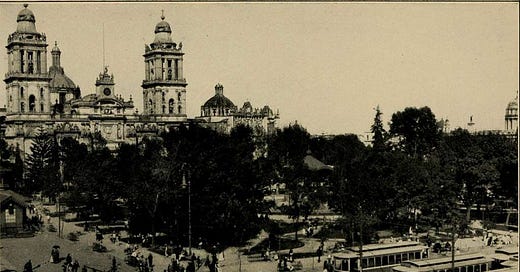






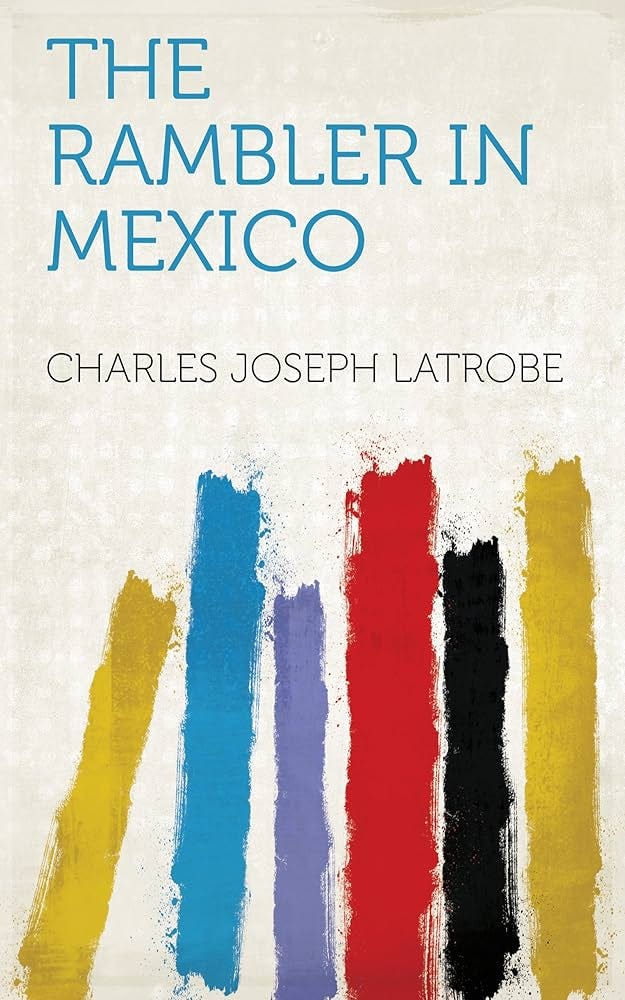


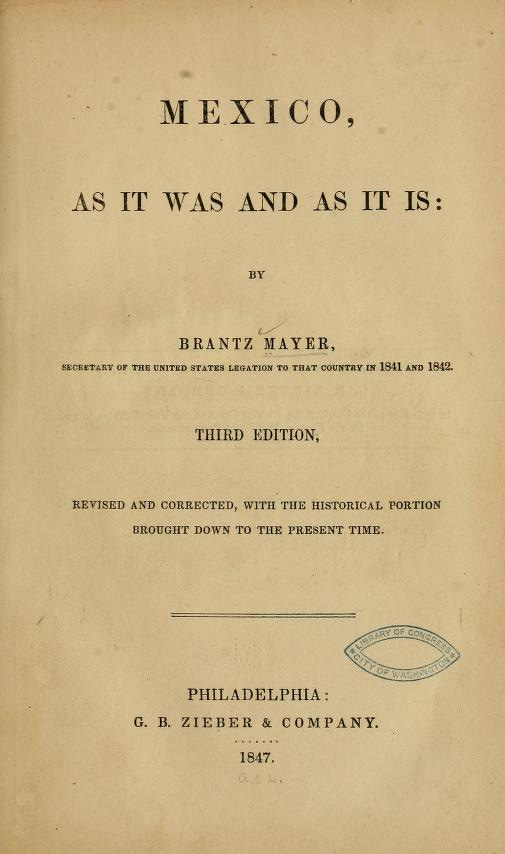
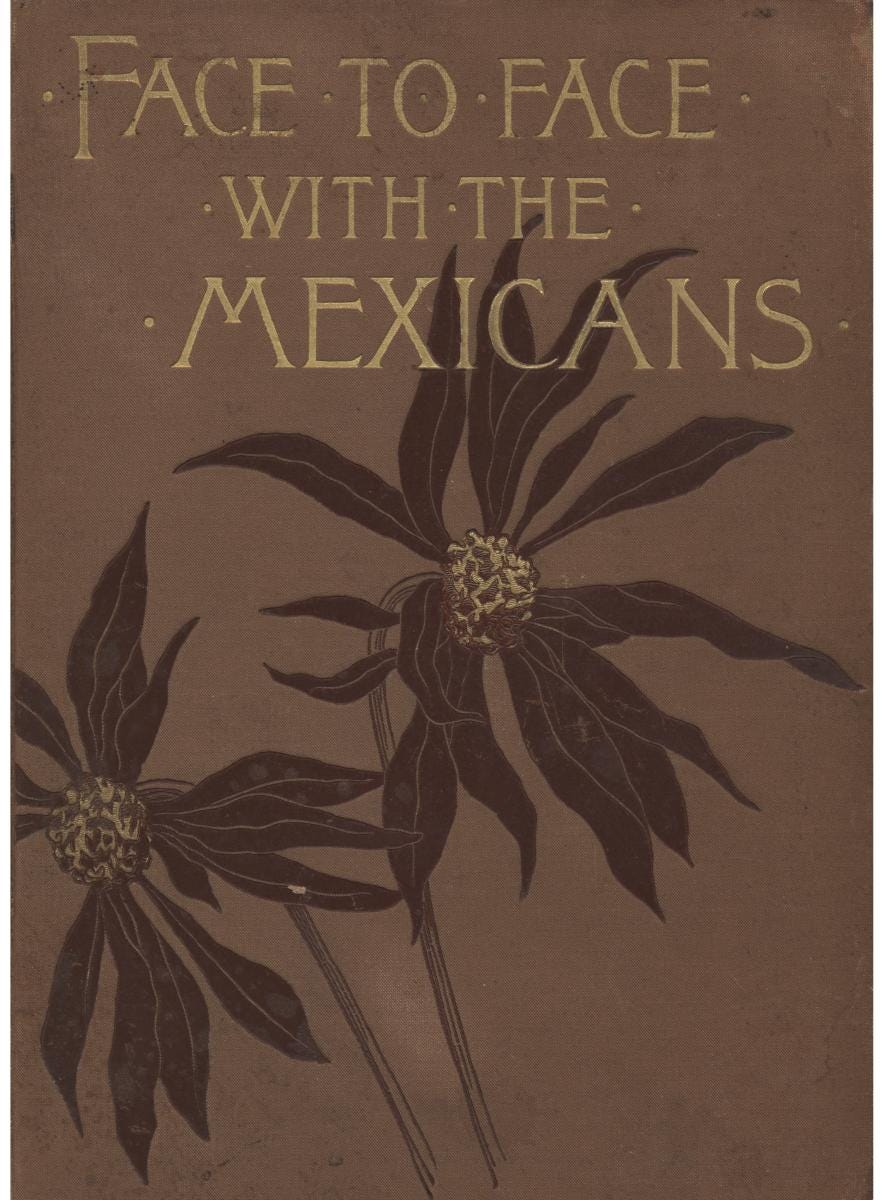
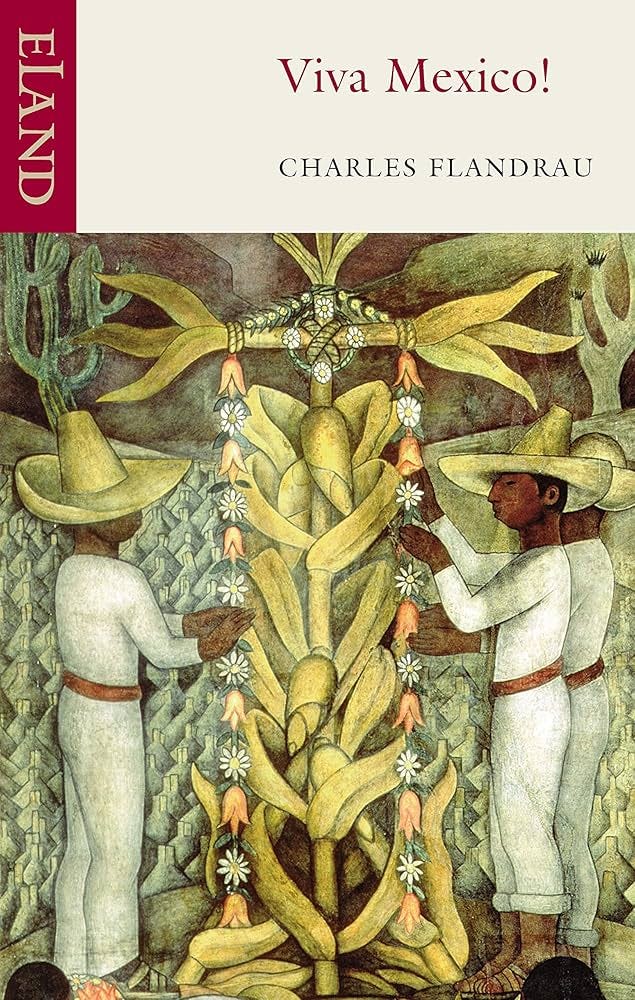
Wow, you went real deep! Nice work. So much to talk about, as always.